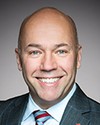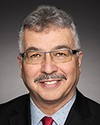Hello.
My Name Is Shurenda Michael. I'm from Shubenacadie. I am a third-year university student at Saint Mary's.
This meeting is important to me today, because at 12 years old, I told my family I wanted to kill myself. My mom reacted saying, “I'll kill you before you kill yourself”. That was the reaction on her part. Later that day my grandfather, who was in the RCMP at the time, came home, and they said, “You have to break it to him.” I said, “Okay.” I broke it to him and I said, “I want to kill myself.” He said, “What's your plan?” I was 12 at the time and I said, “I don't have a plan; I just feel pain.” He said, “When? Why?” and he asked me all the questions and communicated with me, and it was important for me to realize that it wasn't only me who was going through this. He said, “Rough day on a job, family arguments.” He thought the same. It astonished me, and I couldn't believe that someone who was so respectable in my eyes and so strong was broken too. It wasn't just me.
Another reason this is so close to me is that my mom lost her best friend when she was 22 years old—she had just had me—to suicide. She didn't know that 19 years later I would go through the same thing and lose a friend. She always asked herself why and what she could have done. She always beat herself up about it.
It's an intergenerational thing in these communities. It's not just one generation; it's not just my generation. This was 20 years ago when she lost her best friend, and then I lost a close friend of mine to this.
The thing I find important is leaving that stigma at the door, because the stigma of, “Oh, you're just having a bad day, not a bad life” doesn't let you explain, and there's a lot of, “You're the problem of it all” and “You want to break everyone else down” when really you don't; you just want help. You want to be able to tell people. When my mom told me that she was going to kill me before I killed myself, I felt like a bigger mistake.
My father wasn't in my life, so my mom called my father before my grandfather stepped up. I asked him, “Why weren't you there for me?” He said, “I don't know.” He didn't have an answer for me. At 12 years old that made me feel like I was a mistake to my father, and that hurt me even more. When my grandfather hugged me and told me, “It's okay. I've felt this way too” and he communicated with me, it made me feel like it wasn't only me going through this. Opening that door and being able to communicate that you aren't the only one going through this made me able to....
I know I go through it every now and then because I'm in university and I let my anxiety and depression eat me every now and then to this day, but there are different ways I can reach out now. I have the support of the LOVE program and different supports now.
That's what I have to say.




